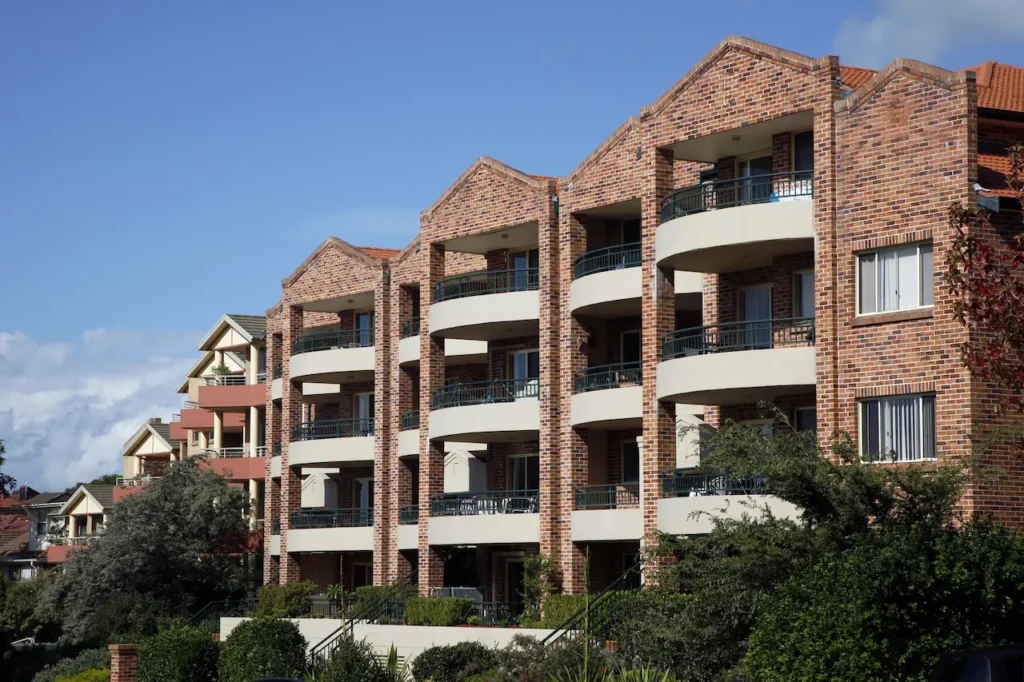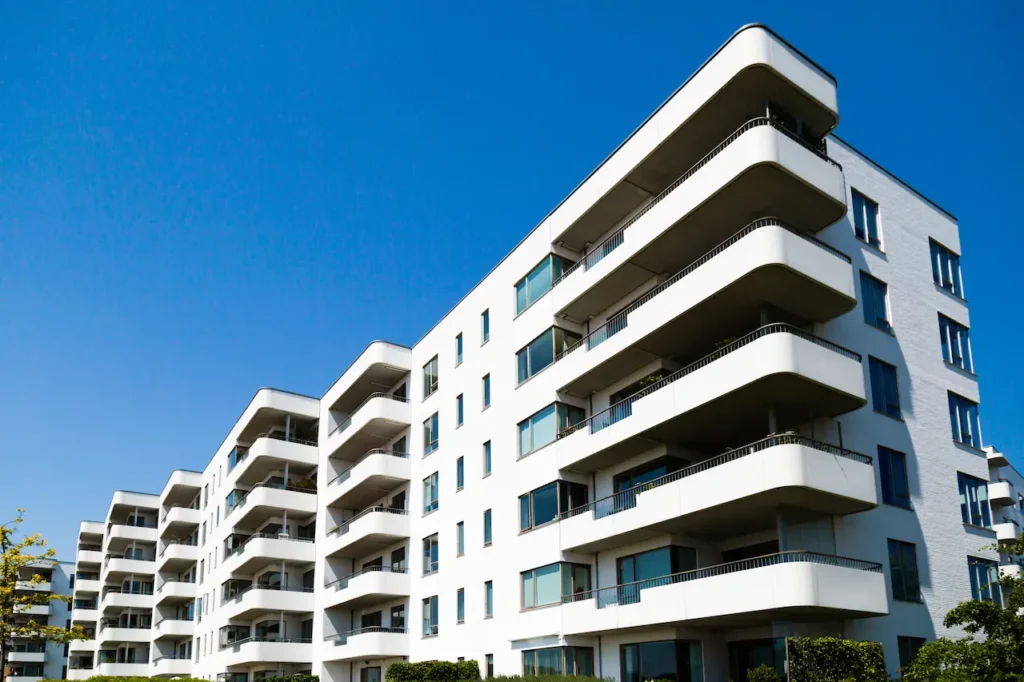Introduction:
Sydney, Australia’s largest and most iconic city, is home to some of the country’s most coveted real estate. Known for its stunning beaches, world-class amenities, and proximity to employment hubs, it is the dream destination for many people seeking both lifestyle and career opportunities. However, for families, particularly those trying to break into the property market, that dream is slipping further out of reach. While there has been significant encouragement from various experts for families to consider apartments as an alternative to traditional detached houses, the reality is starkly different.
In fact, according to the latest research from RiskWise Property Research, apartments large enough to accommodate families are becoming increasingly unaffordable in Sydney. Even moderately sized units, such as those with an internal area of around 105sqm, now require families to spend over nine years’ worth of their household income to make a purchase. This affordability gap is not just a statistical concern—it’s a growing crisis that is pushing Sydney’s working families further into financial hardship.
At RiskWise Property Research, our team is dedicated to investigating the complex dynamics of Sydney’s housing market. Through detailed analysis, we track key trends, monitor shifting demand and supply patterns, and offer critical insights on housing affordability. We aim to provide clarity for investors, prospective homeowners, and policymakers who need to understand the financial implications of the city’s rapidly changing real estate landscape.
This article delves into the findings of our most recent analysis, which underscores the severity of the affordability crisis faced by families trying to secure family-sized apartments in Sydney. We will examine the challenges, personal stories of those affected, and discuss the broader implications for Sydney’s housing market. Our aim is to shed light on the increasingly unaffordable nature of apartment living in Sydney and why urgent solutions are needed.

The High Price of Family-Friendly Units: The Struggle to Find Affordable Housing in Sydney
Sydney’s property market has long been known for its high prices, but the rise in affordability challenges for family-sized units has exacerbated the problem in recent years. A critical component of the RiskWise Property Research findings revolves around the rising cost of apartments that are deemed suitable for family living.
A 105sqm unit, which is considered a reasonable size for a small family—providing enough space for bedrooms, living areas, and some storage—now has a median price of approximately $847,000 in Sydney. This is significantly higher than what most families can afford, especially when considering the median annual household income of $91,000, according to the Australian Bureau of Statistics (ABS).
This means that the affordability ratio, known as the Price-to-Income Ratio (PIR), is alarmingly high. For a 105sqm unit, the PIR is 9.3, indicating that it would take 9.3 years of annual household income just to afford the property—without factoring in interest rates, taxes, or other associated costs. This makes Sydney the least affordable capital city in Australia, with units in the inner and middle rings of the city becoming even more unattainable as prices continue to rise.
In contrast, cities like Melbourne have a PIR of 7.5, while Brisbane is relatively more affordable with a PIR of 5.8. Sydney’s price-to-income ratio is significantly higher, which raises serious concerns about the city’s ability to provide affordable housing options for its growing population, particularly for families who require more space.
The Price-to-Income Ratio: A Clear Indicator of Sydney’s Unaffordable Housing Market
The Price-to-Income Ratio is a key metric used to assess the affordability of housing in a given market. It compares the median property price to the annual household income, helping to determine whether homes are realistically affordable for the typical buyer in a particular region.
In Sydney, the median price of a 105sqm unit sits at $847,000. Using the median household income of $91,000 per year, this translates into a Price-to-Income Ratio of 9.3. This is a stark reminder of the growing affordability gap in the city. For families, this means that purchasing a family-sized unit requires more than nine years of their annual income—an increasingly impossible scenario given the rising costs of living and stagnant wage growth in many sectors.
The growing affordability gap is a direct result of skyrocketing property prices, which continue to outpace the growth in household incomes. For many families, the prospect of homeownership or securing a suitably-sized apartment is no longer a reality. Even the relatively lower price-to-income ratio in cities like Melbourne (7.5) still remains high for average families, but Sydney’s PIR stands as a glaring example of a market where the average household is simply priced out.
The affordability gap is even more pronounced when comparing Sydney to other Australian cities. While Sydney has historically been considered one of the most expensive real estate markets in the country, the sheer scale of the unaffordability crisis has escalated in recent years. This gap raises fundamental questions about the future of Sydney’s housing market and the broader implications for its residents.
The Personal Impact: Families Struggling to Find a Home
To truly understand the scale of Sydney’s housing crisis, it is important to consider the experiences of real families who are trying to navigate the market. Matthias and Nicole, a couple with one child, provide a personal example of how Sydney’s housing crisis has affected real families.
Matthias and Nicole currently live in a two-bedroom apartment in Sydney’s CBD, but they have been unable to find a suitable, affordable three-bedroom apartment, even though they are planning to expand their family. Nicole shared that they were initially hopeful about finding a reasonably priced, family-friendly apartment. However, their hopes were quickly dashed when they realized that most of the available three-bedroom units are luxury penthouses priced far above their budget.
“There are no apartments of that size,” Nicole says. “Most of the three-bedroom apartments are penthouse-style, which are way beyond our price range.” Their frustration is compounded by the lack of diversity in the housing market, particularly for families who need more space.
For families like Matthias and Nicole, Sydney’s housing market is forcing them to make difficult choices. Their options are limited to either staying in an unsuitable two-bedroom apartment, relocating to the suburbs, or shelving their plans to have another child. This is a stark contrast to the idealized image of apartment living near the city’s heart—where families could thrive while enjoying proximity to essential amenities.
The shortage of larger, affordable apartments in the city has become a key issue for many families. RiskWise Property Research has found that family-sized apartments, particularly in central areas like the Eastern Suburbs and the Northern Beaches, are in short supply. The median price of a 105sqm unit in the Eastern Suburbs is $1.29 million, and in the Northern Beaches, it is around $1.24 million. These prices are unaffordable for many families, even those with dual incomes.

Supply vs. Demand: The Unmet Need for Family-Sized Units
Sydney’s shortage of affordable, family-sized apartments is not just an issue of price but also an issue of supply. There has been an increasing demand for larger apartments, but developers have failed to keep up with this demand.
Research conducted by the University of Wollongong shows that the number of three-bedroom apartments in Sydney’s urban areas has declined over the past decade. For example, in Liverpool’s CBD, which has a growing population of families, three-bedroom apartments make up only about 14% of the high-rise housing stock, a figure that has fallen since the 2011 and 2016 censuses. While regulations require at least 10% of new developments to include three-bedroom units, the actual supply is woefully inadequate.
This mismatch between supply and demand is one of the primary drivers of the affordability crisis in Sydney. Dr. Sophie-May Kerr, a researcher from the City Futures Research Centre, explains that families are increasingly seeking larger apartments in central areas like Liverpool, not necessarily to avoid the suburbs but because of the convenience and lifestyle benefits associated with living in close proximity to work, education, and public amenities.
However, the supply of larger apartments is simply not keeping pace with demand, and the result is a severe shortage of suitable housing for families in these central urban areas.
Shifting Perceptions: The Need for Family-Friendly Apartments
One of the most pressing issues is the perception of apartment living. For many years, apartments were viewed as temporary solutions for singles or couples before purchasing a detached house in the suburbs. However, the housing affordability crisis has led to a shift in the way people view apartments.
More and more families are opting to live in apartments, particularly in areas where the convenience of proximity to work, schools, and public transport outweighs the need for a detached house with a backyard. As Dr. Nicole Cook, one of the authors of the University of Wollongong report, argues, an increasing number of families are prioritizing larger, centrally-located apartments over detached homes in suburban areas.
However, despite this changing demand, many of the apartments being built today still do not cater to the needs of families. Poor design, including lack of storage space, limited communal areas, and poor soundproofing, makes it difficult for families to live comfortably in these units. In many cases, the apartments are poorly suited to the realities of raising children, leading to frustration and dissatisfaction among tenants.
**The Way Forward: Address
ing Sydney’s Housing Affordability Crisis**
There is an urgent need for a shift in both housing policy and urban design to address the affordability crisis. If Sydney’s housing market is to meet the needs of its growing population, particularly families, we must reconsider how we approach the design and development of apartments. This includes ensuring that more family-friendly apartments are built, with adequate space, storage, and communal areas that accommodate the needs of children and their parents.
The demand for family-sized apartments will continue to grow as house prices remain out of reach for most families. Developers and policymakers must work together to create a more diverse range of affordable housing options, particularly in urban centers where families want to live.
At RiskWise Property, we remain committed to researching and analyzing Sydney’s housing market to provide our clients with the insights they need to navigate the increasingly complex landscape. We continue to monitor trends in supply, demand, and affordability, offering data-driven insights that inform investment decisions and public policy.

Conclusion: RiskWise Property’s Role in Shaping the Future of Sydney’s Housing Market
Sydney’s housing crisis is a pressing issue, and the unaffordability of family-sized apartments is a central part of this crisis. As housing prices rise, families are being forced to make difficult compromises, such as delaying plans to have children, living in substandard apartments, or moving to the suburbs.
At RiskWise Property, we believe that understanding the market and the dynamics shaping it is crucial for making informed decisions about housing. Through our research and ongoing analysis, we aim to provide valuable insights into the state of the Sydney property market, empowering investors, policymakers, and families with the information they need to navigate the challenges ahead.
The future of Sydney’s housing market will depend on innovative solutions that address the supply and demand issues, affordability challenges, and the need for family-friendly housing. Only through collaboration between developers, urban planners, and policymakers can we hope to provide families with the homes they need to thrive in this beautiful but increasingly unaffordable city.